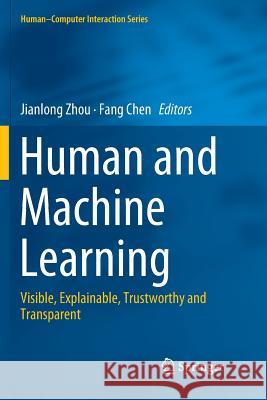Human and Machine Learning: Visible, Explainable, Trustworthy and Transparent » książka
topmenu
Human and Machine Learning: Visible, Explainable, Trustworthy and Transparent
ISBN-13: 9783030080075 / Angielski / Miękka / 2019 / 482 str.
Kategorie:
Kategorie BISAC:
Wydawca:
Springer
Seria wydawnicza:
Język:
Angielski
ISBN-13:
9783030080075
Rok wydania:
2019
Wydanie:
Softcover Repri
Numer serii:
000303886
Ilość stron:
482
Waga:
0.70 kg
Wymiary:
23.39 x 15.6 x 2.59
Oprawa:
Miękka
Wolumenów:
01
Dodatkowe informacje:
Wydanie ilustrowane











